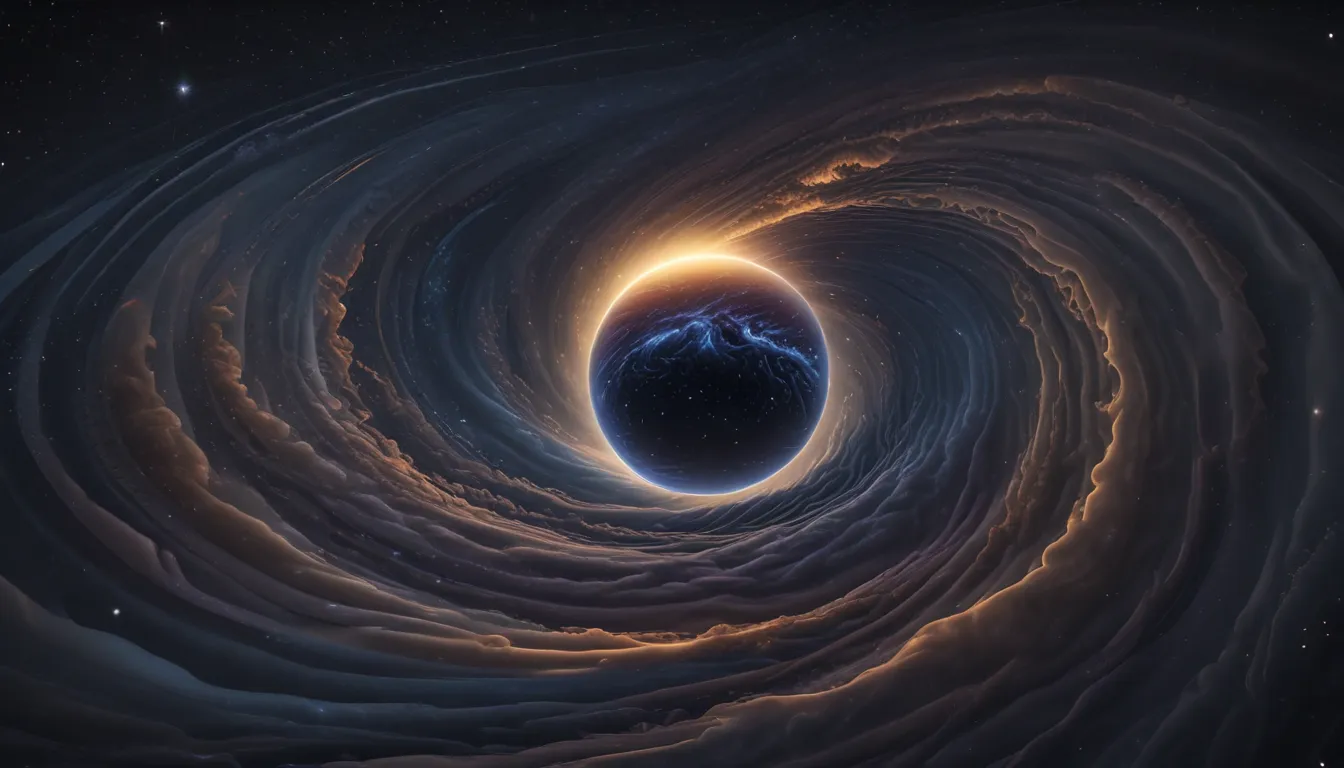The pictures we use in our articles might not show exactly what the words say. We choose these pictures to make you interested in reading more. The pictures work together with the words but don’t take their place. The words still tell you the important facts.
Space-based gravitational wave detectors have emerged as groundbreaking instruments that revolutionize our understanding of the cosmos. These remarkable devices, positioned in orbit around our planet, have the unique capacity to identify subtle ripples in the fabric of space-time created by cataclysmic occurrences like black hole collisions or neutron star mergers. Let's delve into the realm of these technological marvels and unravel the mysteries they hold about the universe.
Exploring the Origins of Space-based Gravitational Wave Detectors
The inception of space-based gravitational wave detectors can be traced back to the development of ground-based detectors in the 1960s. Although the idea of a space-based detector began to gain traction in the early 1990s, it wasn't until recent years that significant progress was made in this field.
Evading the Constraints of Earthly Limitations
A significant advantage of space-based gravitational wave detectors lies in their capability to evade interference from earthly factors such as seismic vibrations and atmospheric disruptions that can constrain the sensitivity of ground-based detectors. By operating in the vacuum of space, these detectors can enhance their precision and accuracy in detecting gravitational waves.
Unveiling LISA: The Next Frontier
Among the promising space-based gravitational wave detector projects, the Laser Interferometer Space Antenna (LISA) stands out as a frontrunner. Scheduled for launch in the 2030s, LISA will comprise three spacecraft forming an equilateral triangle configuration, utilizing laser beams to measure the relative distances between them with unparalleled precision.
Delving into the Detection of Low-Frequency Waves
Space-based detectors like LISA are specifically designed to detect gravitational waves in the low-frequency range, typically between 0.1 millihertz to 1 hertz. This range of frequencies is often beyond the detection capabilities of ground-based detectors, opening up new avenues for exploration and discovery.
Mapping the Cosmos with Unprecedented Clarity
The advent of space-based gravitational wave detectors enables scientists to map the cosmos in a novel and comprehensive manner. By capturing gravitational waves from distant sources, these detectors offer valuable insights into the formation of galaxies, black holes, and various cosmic phenomena, unveiling the intricate tapestry of the universe.
Unveiling the Mysteries of Black Holes
The study of gravitational waves through space-based detectors provides a unique opportunity to deepen our understanding of black holes. By observing black hole mergers via gravitational waves, scientists can glean insights into their mass, spin, and even their origin, shedding light on these enigmatic cosmic entities.
Embracing the Cosmic Symphony of Gravitational Waves
Gravitational waves serve as messengers carrying vital information about the celestial events that produce them, such as the collision of black holes or neutron stars. Space-based detectors not only detect these waves but also offer us the chance to listen to the cosmic symphony they compose, unraveling the hidden secrets of the universe in the process.
Fostering Multinational Collaboration
Initiatives like LISA embody a collaborative endeavor involving multiple space agencies like the European Space Agency (ESA), NASA, and other international partners. Together, these agencies strive to realize the vision of space-based gravitational wave detectors, marking a significant milestone in astrophysical exploration.
Cultivating Innovative Technology
Creating space-based gravitational wave detectors presents a formidable technological challenge, demanding precise laser measurements, accurate positioning, and the ability to maintain stability in the harsh environment of space over extended periods. These technological feats are essential in enabling the successful operation of these groundbreaking instruments.
Pioneering Gravitational Wave Telescopes
In addition to detecting gravitational waves, space-based telescopes like LISA possess the capability to observe a myriad of other astrophysical phenomena, offering insights into the interactions of supermassive black holes with their surrounding environments and expanding our understanding of the cosmos.
Enhancing the Synergy with Ground-based Observatories
Complementing ground-based observatories, space-based detectors play a pivotal role in providing supplementary data and corroborating gravitational wave signals. Together, they form a robust network for studying the universe and unraveling its mysteries with enhanced clarity and precision.
Unlocking the Enigma of Neutron Stars
Space-based detectors unlock new pathways for studying neutron stars, which are dense remnants of massive stars. By observing the gravitational waves emanating from these celestial bodies, scientists can gain profound insights into their composition, formation, and behavior, enriching our knowledge of the universe.
Unleashing the Potential of Space-based Gravitational Wave Detectors
These space-based detectors hold boundless potential to revolutionize our comprehension of the universe, unveiling unseen phenomena, and addressing fundamental questions concerning the nature of space, time, and gravity. They represent a significant leap forward in our exploration of the cosmos, guiding us towards groundbreaking discoveries and novel scientific inquiries.
Spearheading a New Era in Astronomy
Space-based gravitational wave detectors herald a new dawn in astronomy, offering a unique vantage point to observe and study cosmic phenomena with unparalleled precision and clarity. By peering into the depths of space through these innovative instruments, we embark on a transformative journey of cosmic exploration.
Inspiring the Trailblazers of Tomorrow
The development and success of space-based gravitational wave detectors serve as a beacon of inspiration, motivating future generations to embark on careers in science and exploration. They ignite curiosity, propel innovation, and push the boundaries of human knowledge, inspiring a new wave of explorers and innovators to delve into the uncharted realms of the universe.
In conclusion, space-based gravitational wave detectors stand at the forefront of scientific discovery, unlocking the secrets of the universe and expanding the horizons of astrophysical exploration. With ongoing advancements and ambitious projects like LISA, we anticipate delving deeper into the mysteries of the cosmos and embarking on an exhilarating journey of cosmic exploration.
FAQs
- What are space-based gravitational wave detectors?
-
Space-based gravitational wave detectors are sophisticated instruments designed to detect and measure ripples in space-time generated by massive celestial events like black hole collisions or neutron star mergers.
-
How do space-based detectors differ from ground-based ones?
-
Space-based detectors operate in the space environment, free from the disturbances caused by Earth's atmosphere and seismic activities. This independence allows them to detect fainter gravitational waves and observe a broader swath of the sky compared to ground-based counterparts.
-
What advantages do space-based detectors offer?
-
Space-based detectors provide an extended range of sensitivity, enabling the detection of lower-frequency gravitational waves. They also have the potential to capture gravitational waves from sources beyond the reach of Earth-based detectors, offering a more comprehensive view of the universe.
-
Are there any upcoming space-based gravitational wave detector missions?
-
Yes, several exciting missions are in the pipeline. The Laser Interferometer Space Antenna (LISA) mission, slated for launch in the 2030s, aims to detect low-frequency gravitational waves. Additionally, the Big Deci-hertz Gravitational wave Observatory (B-DECIGO) mission is under consideration, potentially offering high-frequency gravitational wave observations.
-
What have space-based detectors taught us so far?
- Space-based detectors have already made significant discoveries, including observing gravitational waves from black hole mergers and neutron star collisions. These observations have confirmed various theories of general relativity and provided insights into extreme cosmic events.
Embark on a journey through the wonders of space-based gravitational wave detectors, where each discovery unravels a new chapter in our cosmic exploration. Join us in our quest to uncover the mysteries of the universe, as we gaze beyond the stars and delve into the vast expanse of space, guided by the brilliance of science and the spirit of discovery.






